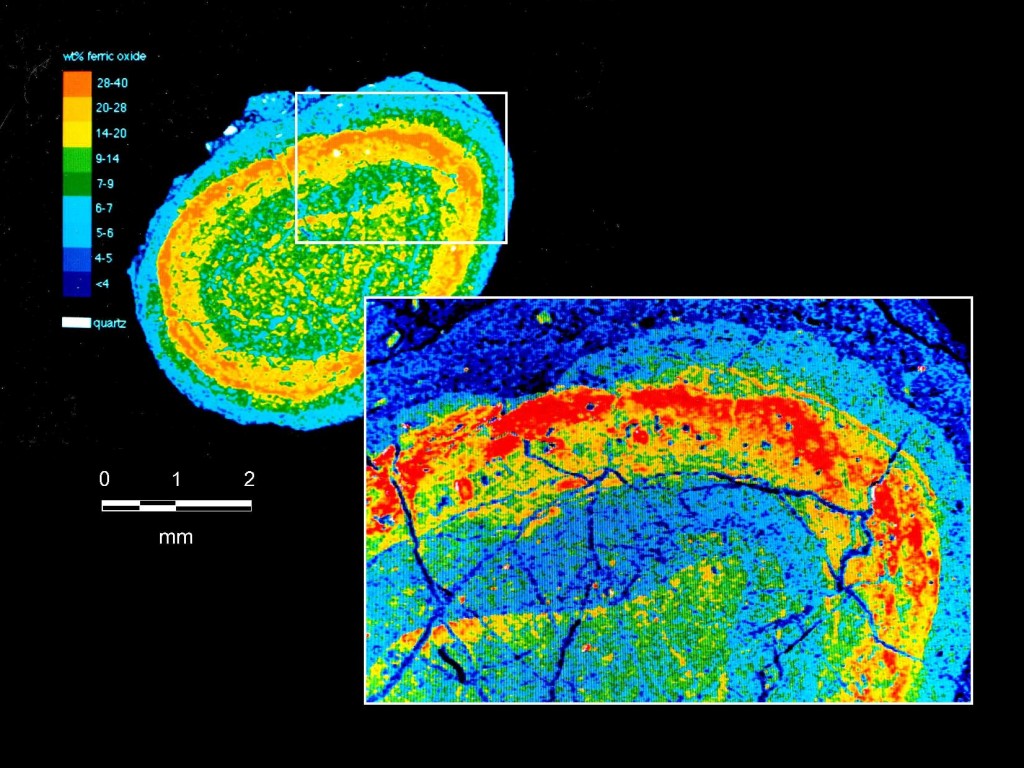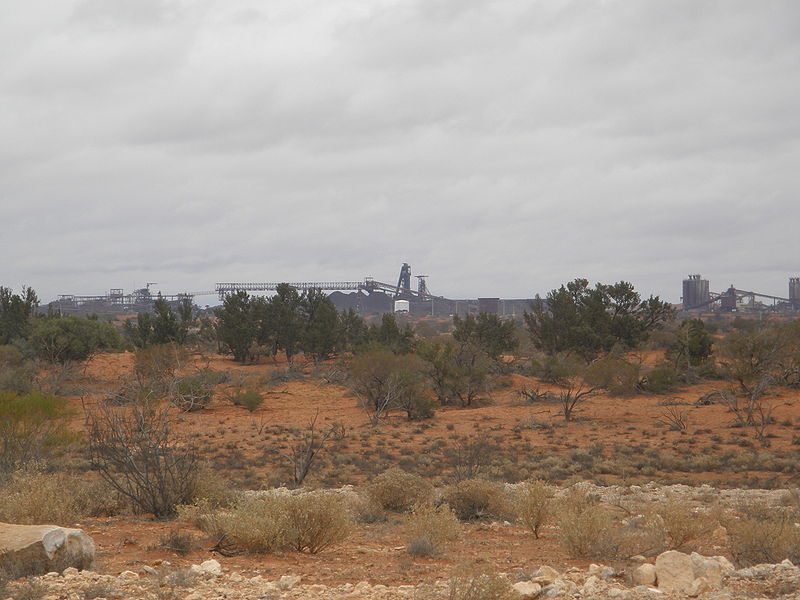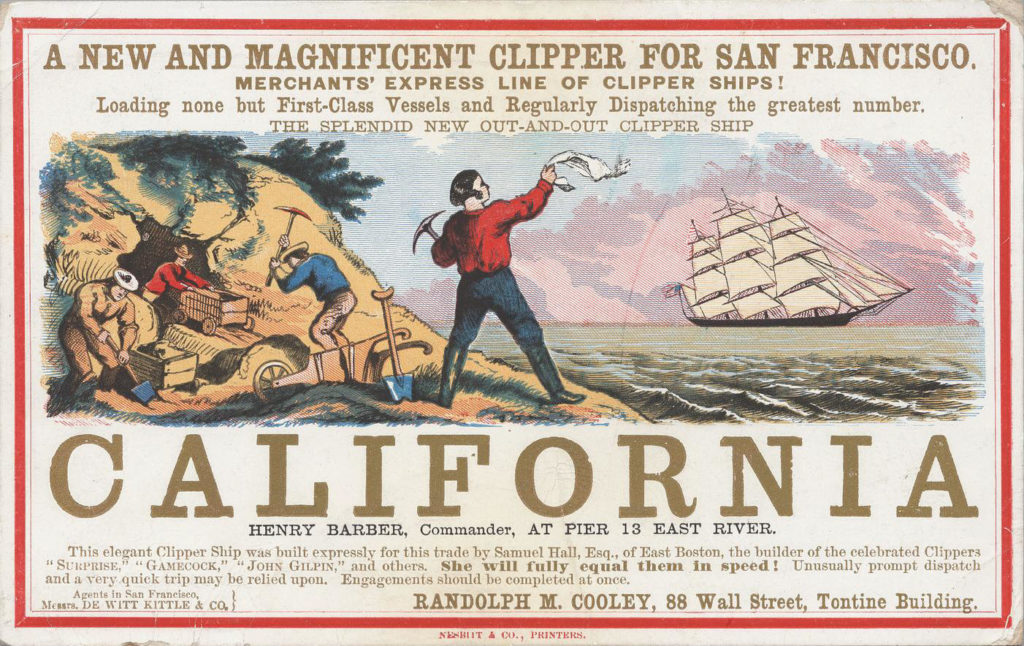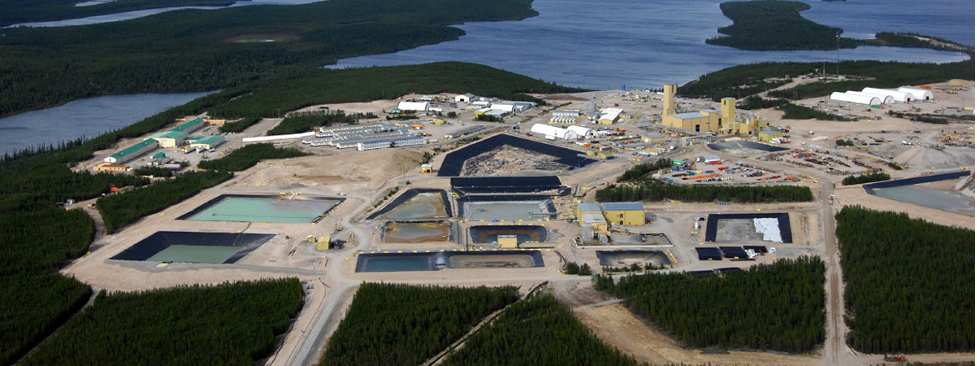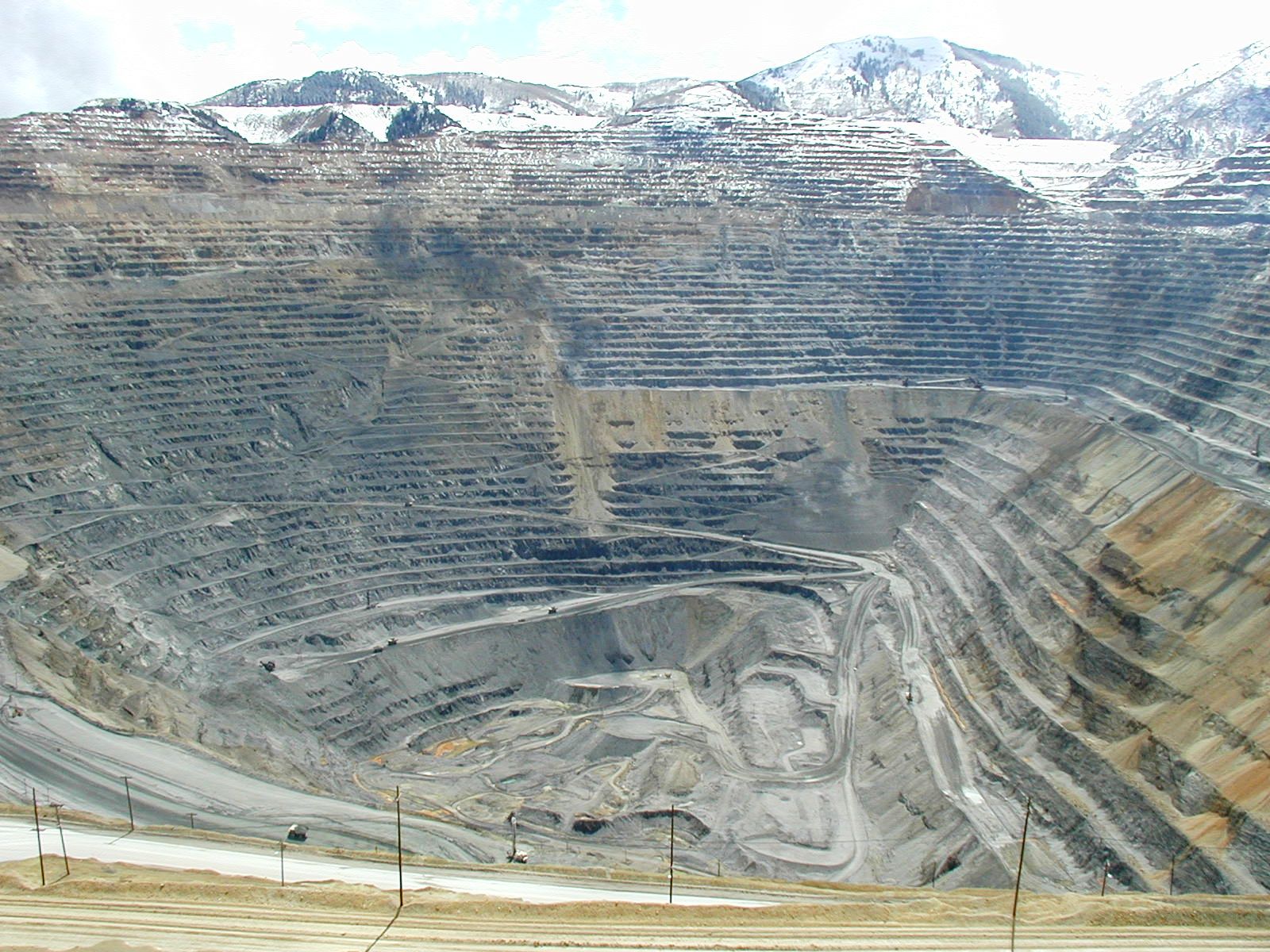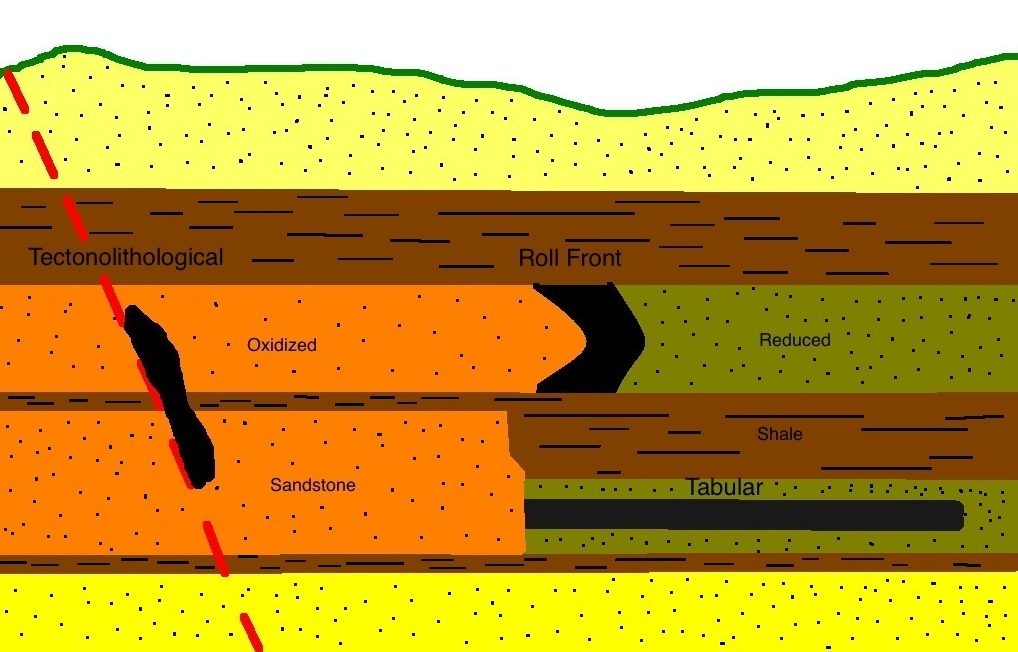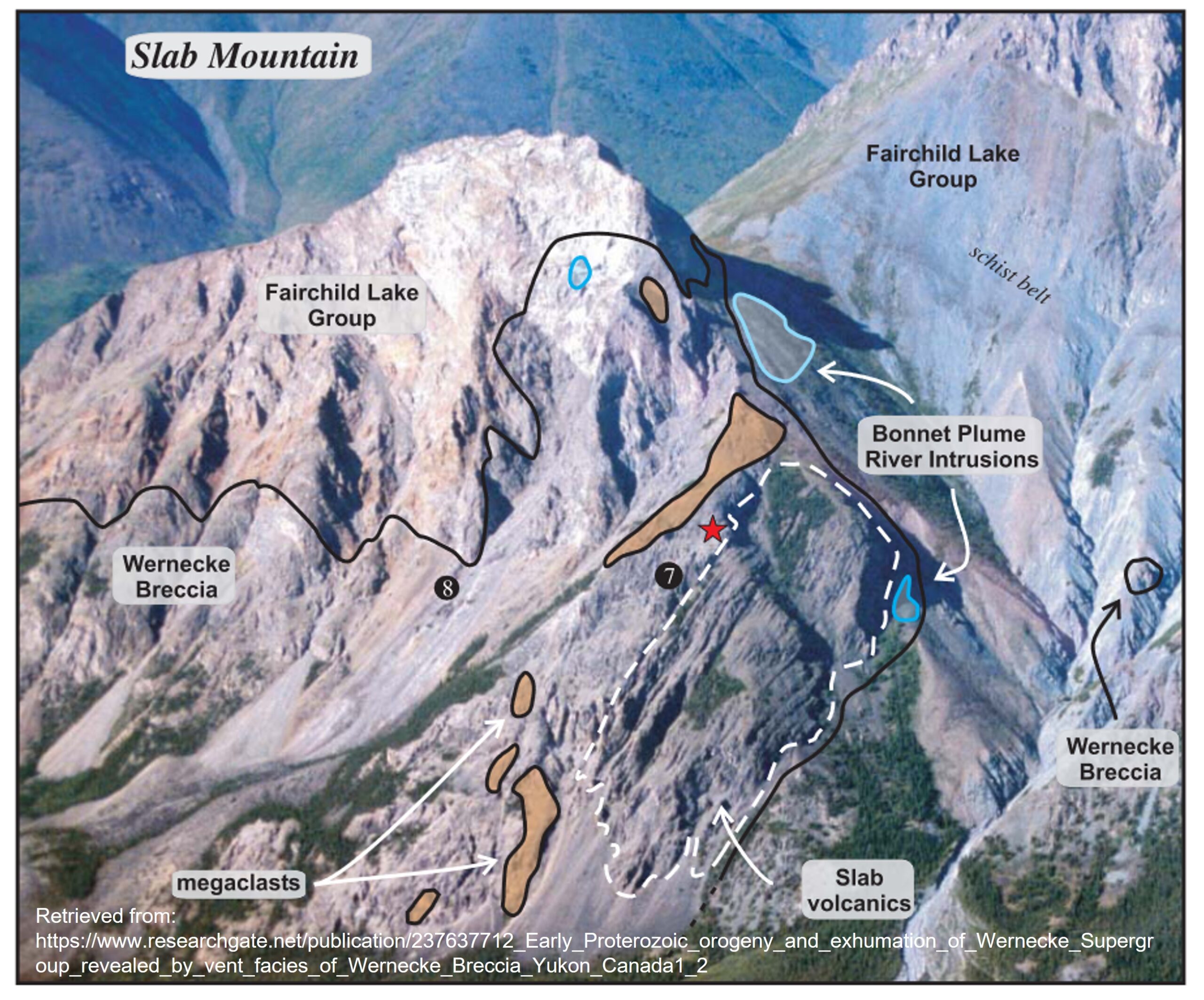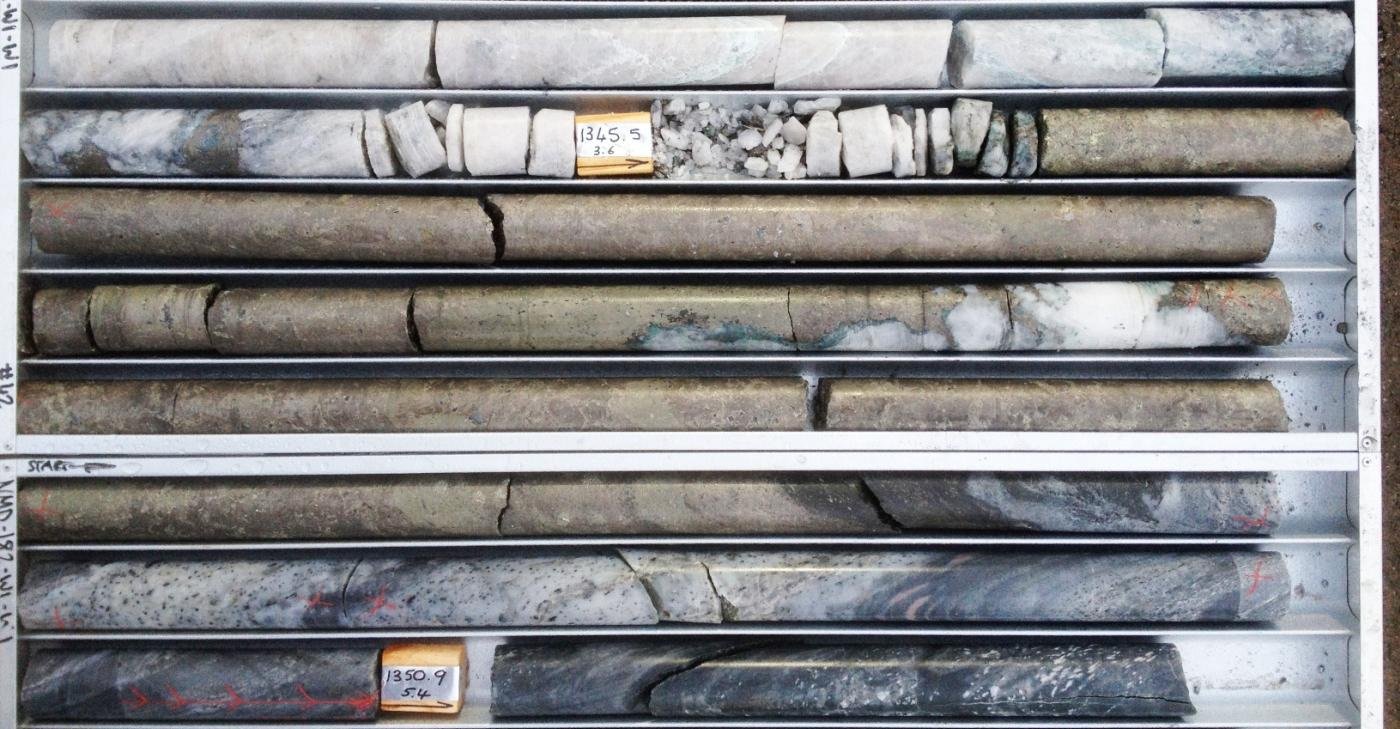Carlin-type gold deposits account for 9% of the world’s gold production. These deposits are typically low grade, high tonnage and they appear to be largely confined to Nevada, USA. While gold was first discovered in Nevada in the 1870’s, it wasn’t until 1961 when Newmont discovered and developed the first mine along a structurally faulted area now known as the Carlin Trend. The gold within these deposits is typically microns in size to near invisible. Though these deposits are low grade, open pit mining and extraction using the low-cost heap-leach method makes the deposits economical.
These deposits have been referred to as the “elephants of gold deposits” due to the large amounts of gold they contain.
Physical Characteristics
These deposits are structurally hosted and form within a topographic region in North America known to as the “Basin and Range“. This basin and range topography formed due to compression and extension by global tectonic forces and the thinning the underlying crust. This produced curved faults, known as “listric” faults that level off at depth. This faulting also produced the hills and valleys throughout the region. These deposits can be quite small (>100 tonnes of gold) to very large (>250 tonnes of gold) with grades averaging from less than 1 g/t to 20 g/t. Of course, “small” is a relative term here as other gold deposits can contain a few million ounces of gold. These deposits have been described as the “elephants of gold deposits” due to the amount of gold they contain.
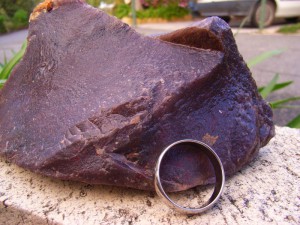
Ore Minerals
There are three phases of ore mineralization within Carlin-type gold deposits; unoxidized refractory, oxidized and jasperoid. Refractory ore is composed of carbonate rocks containing finely dispersed sulfide minerals such as pyrite/marcasite (iron sulfides) and arsenopyrite (arsenic iron sulfide). As surface water seeps into the bedrock, these sulfide minerals can oxidize and break down to form iron oxides such as goethite and hematite. Jasperoids form through hydrothermal alteration along faults and between sedimentary beds. Hydrothermal alteration can change the composition of the host rock by replacing the original carbonate rock with jasper; a silica rich mineral containing iron. These fluids are highly enriched in iron and sulfur and can also lead to the precipitation of gold-bearing pyrite.
How do they form?
There is still some debate on the formation of Carlin-type deposits. However, the general consensus is that several tectonic events of compression and extension lead to the formation of folds and steeply dipping faults and fractures that acted as conduits and traps for mineralization. Hot hydrothermal fluids deep within the earth moved through these conduits chemically altering the surrounding rock and depositing fine grained gold-bearing sulfides. The passage of these fluids also lead to dissolution of the sedimentary host rock which compromised the rock’s strength and caused the development of collapse structures. This created extra space for fluid flow and increased the chances of mineralization. Surface water also infiltrated the rock from above converting the sulfide minerals into oxides from which the gold is more easily and cheaply extracted.
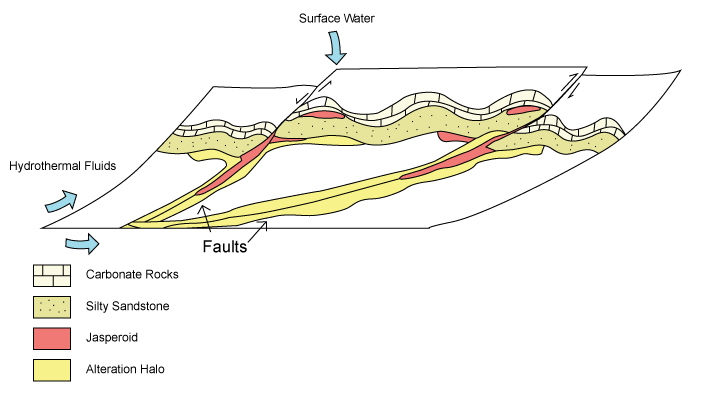
How do we find them?
The common surficial exploration methods used are geologic mapping along with rock and soil sampling. However due to the topography many deposits are buried below thick packages of sediment. Deposits exposed near the surface are becoming increasingly difficult to identify, therefore deep exploration techniques are required. RC drilling is a common method of prospecting for these types of deposits. It’s cost effective and quick for drilling shallower depths, especially in soft sediments.
Common geophysical methods used for identifying areas of potential Carlin-type mineralization include; Induced Polarization (IP) surveys, Electromagnetic (EM) and magnetic surveys. Due to the dispersed nature of sulfides in carlin-type gold deposits, an IP survey can help identify zones of chargeability. Magnetic surveys are helpful in identifying structural trends and zones, an important factor in understanding where mineralization could be potentially located.
How are they mined?
Since these deposits form close to the surface they are usually mined via open pit methods. However in some cases, mineralization can extend to greater depths and require underground mining methods. The ore finely crushed and processed using the low-cost heap leach method, where a solvent is dripped through piles of crushed ore to extract the gold.
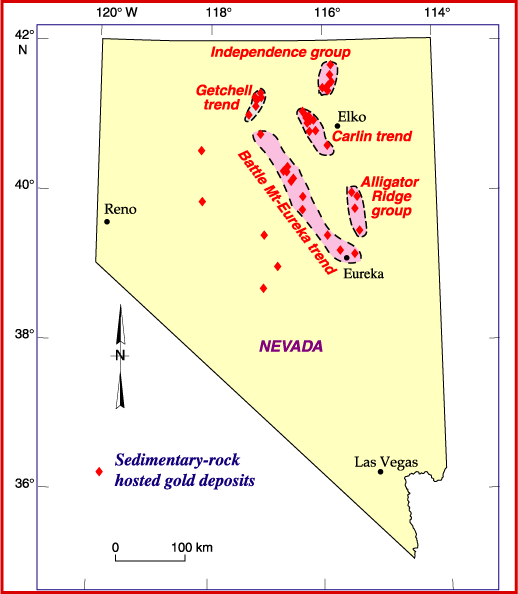
Where are they found?
Carlin-type gold deposits are commonly found in central Nevada, USA. The Carlin trend is a 5 mile wide and 40 mile long corridor that is also referred to as the “Carlin Unconformity”. Although the Carlin trend was discovered first, several other “carlin-type” trends were identified soon after including the Getchell and the Battle Mountain-Eureka trends. Although the majority of deposits are found in Nevada, some carlin-type deposits have been identified in southern China and Indonesia.
Important Deposits
Newmont is the largest producer within central Nevada. Currently the company operates 11 open-pit and 8 underground mines. The Gold Quarry is the largest open pit mine owned by Newmont and has been operating since 1985.
Gold strike mine is one of Barrick gold’s largest gold mine operating in Nevada. The mine is comprised of the Betze-Post-Screamer and Meikle-Rodeo Deposit (the Betze post deposit is up to 1800m long, 180 m thick and 240 m wide. Overall the GoldStrike mine contains up to 10.7 Million ounces of proven and probable gold reserves.
The Cortez mine (also owned by Barrick Gold) is located 100 km south of Elko, Nevada and is another world class (>100 tonnes of gold) gold deposit. The mine comprises two deposits; the Pipeline and South Pipeline. Cortez contains 11 million ounces of proven and probably gold reserves.

